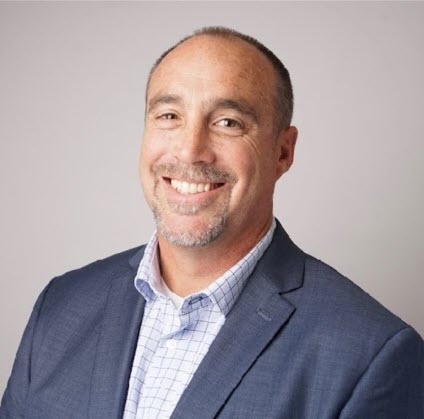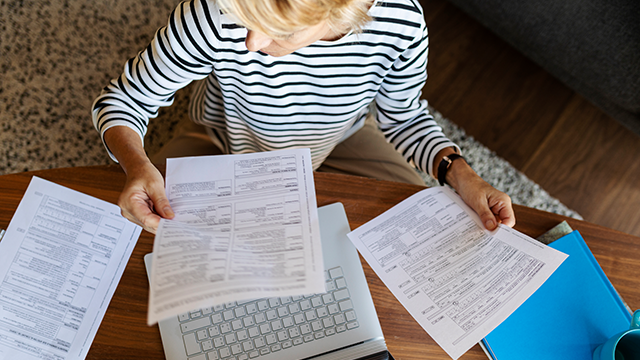

A Small Business Administration (SBA) loan 1 is supported by the U.S. Small Business Administration, which allows financial institutions to provide business loans with more favorable terms or more flexible underwriting criteria than conventional loans. Because they are backed by the government, SBA loans encourage banks to lend to companies they might not be able to work with otherwise. For small company owners who can’t qualify for a traditional business loan, these infusions of capital may be the ideal option.
With the government backing SBA loans, lenders can provide business loans with less stringent credit standards and lower down payments than conventional loans. Repayment terms on SBA loans are longer than those for traditional loans, extended to up to 10 and even 25 years in some cases. Plus, on loan terms of less than 15 years, there is no prepayment penalty. This allows companies to preserve their cash for growth or other needs.
There are several types of SBA loans that can be delivered through two different categories of lenders. Institutions designated as preferred lenders are authorized to make credit decisions on behalf of the SBA, allowing borrowers to get the funds they need faster than with a regular SBA lender. On the other hand, non-SBA preferred lenders need to submit loan requests directly to the SBA for approval, which can result in a much longer process.
SBA 7(a) loans can be used for a variety of approved purposes including commercial real estate purchase or refinance 2 , new construction 3 , expansion or renovation, working capital, and business acquisitions or partner buyouts.
Loan maturity:
Maximum loan amount:
This type of 7(a) loan is generally used for equipment and working capital.
Loan maturity:
Maximum loan amount:
These loans are typically used for financing commercial real estate, including the purchase or refinance of existing buildings or land and new construction. They can also be used for equipment purchases. SBA 504 loans actually involve two loans — one from a private lender, which provides up to 50% of funding in first trust deed position, and the other from a Certified Development Company (CDC), a community-based partner that provides up to 40% in second trust deed position. The applicant typically only needs to provide 10% of the total project costs as a down payment. The CDC portion is guaranteed by the SBA. The bank’s SBA specialist and the CDC work together with the goal of making it seamless for the applicant.
Qualifying criteria:
Cannot be used for:
Loan maturity:
EIDLs can be used to help a business recover from an emergency in a declared disaster area. They can be used for losses not covered by insurance or funding from the Federal Emergency Management Agency. The funds can also be applied to business operating expenses that could have been met in the absence of the disaster. These loans are typically — but not always — issued directly from the SBA.
Each type of SBA program is unique, and loans often revolve around how the money can be used and the terms under which it should be repaid.
To apply for an SBA loan, follow these steps:
Be able to answer the following questions:
The answers you give will help determine your best course of action. Once you know how much you need and how it will be used, the better equipped you’ll be to determine the best loan option for your business.
Back up your request with facts that support how much you are asking to borrow. Lenders appreciate the effort, and it will give them the confidence they need to trust in your ability to pay them back.
Types of lenders that handle SBA loans
The SBA’s Lender Match tool can help.
The six Cs of creditworthiness:
Below are common types of SBA loans. Availability, term and structure vary by lender.
Use the information above to become familiar with your options.
Be prepared to share details about the financial side of your business. Provide the lender with a comprehensive background on your company, future growth plans and your own personal information. The actions below will help boost your business’s financial standing.
For 7(a) and Express loans, look at the checklist the SBA has prepared before you apply to your lender. For a disaster assistance loan, you can start your application with the SBA online. If you’re applying for a 504 loan, we recommend setting up an appointment with a banker.
Set aside an hour to complete the paperwork and reach out to your banker with any questions. Make sure to respond promptly to requests for additional information so that loan processing is not delayed.
SBA loans take the same amount of time to get approved as a conventional loan for a similar purpose. A non-real estate loan can be approved and funded in approximately 30 to 60 days, while a real estate loan can be funded in approximately 60 to 90 days.
As a borrower, you can speed up the process by being actively engaged with your lender and providing the necessary documentation as quickly as possible. The faster you do that, the faster the lender can move forward.

1 Small Business Administration (SBA) loans provide up to 90% financing. Requires approval through the SBA 7(a), SBA 504 or SBA Express programs. Subject to credit approval. Bank of America credit standards, loan terms, collateral and documentation requirements apply and are subject to SBA guidelines.
2 Owner- occupied commercial real estate will be determined in underwriting and requires occupancy by the borrower/guarantor. Please note SBA guidelines require at least 51% occupancy to be considered owner- occupied.
3 The minimum loan amount for ground-up construction is $500,000.
4 Speak to your SBA specialist to learn more about down payment options. The maximum loan amount for SBA Express loans is $500,000.
5 Loan amount assumes a minimum bank portion of $200,000 followed by a 10% client injection and 40% Certified Development Company participation.
Important Disclosures and Information
Small Business Administration (SBA) financing is subject to approval through the SBA 504 and SBA 7(a) programs. Loan terms, collateral and documentation requirements apply. Actual amortization, rate and extension of credit are subject to necessary credit approval. Bank of America credit standards and documentation requirements apply. Some restrictions may apply.
Bank of America, Merrill, their affiliates and advisors do not provide legal, tax or accounting advice. Consult your own legal and/or tax advisors before making any financial decisions. Any informational materials provided are for your discussion or review purposes only. The content on the Center for Business Empowerment (including, without limitations, third party and any Bank of America content) is provided “as is” and carries no express or implied warranties, or promise or guaranty of success. Bank of America does not warrant or guarantee the accuracy, reliability, completeness, usefulness, non-infringement of intellectual property rights, or quality of any content, regardless of who originates that content, and disclaims the same to the extent allowable by law. All third party trademarks, service marks, trade names and logos referenced in this material are the property of their respective owners. Bank of America does not deliver and is not responsible for the products, services or performance of any third party.
Not all materials on the Center for Business Empowerment will be available in Spanish.
Certain links may direct you away from Bank of America to unaffiliated sites. Bank of America has not been involved in the preparation of the content supplied at unaffiliated sites and does not guarantee or assume any responsibility for their content. When you visit these sites, you are agreeing to all of their terms of use, including their privacy and security policies.
Credit cards, credit lines and loans are subject to credit approval and creditworthiness. Some restrictions may apply.
Merrill Lynch, Pierce, Fenner & Smith Incorporated (also referred to as “MLPF&S" or “Merrill") makes available certain investment products sponsored, managed, distributed or provided by companies that are affiliates of Bank of America Corporation (“BofA Corp."). MLPF&S is a registered broker-dealer, registered investment adviser, Member SIPC, and a wholly owned subsidiary of BofA Corp.
Banking products are provided by Bank of America, N.A., and affiliated banks, Members FDIC, and wholly owned subsidiaries of BofA Corp.
“Bank of America” and “BofA Securities” are the marketing names used by the Global Banking and Global Markets division of Bank of America Corporation. Lending, derivatives, other commercial banking activities, and trading in certain financial instruments are performed globally by banking affiliates of Bank of America Corporation, including Bank of America, N.A., Member FDIC. Trading in securities and financial instruments, and strategic advisory, and other investment banking activities, are performed globally by investment banking affiliates of Bank of America Corporation (“Investment Banking Affiliates”), including, in the United States, BofA Securities, Inc., which is a registered broker-dealer and Member of SIPC, and, in other jurisdictions, by locally registered entities. BofA Securities, Inc. is a registered futures commission merchant with the CFTC and a member of the NFA.
Investment products:
| Are Not FDIC Insured | Are Not Bank Guaranteed | May Lose Value |